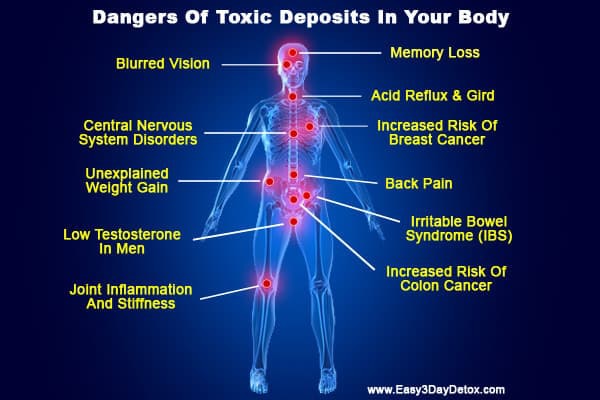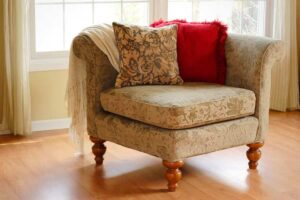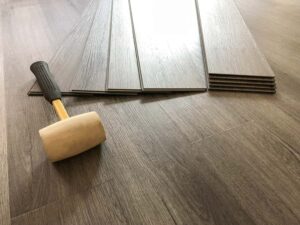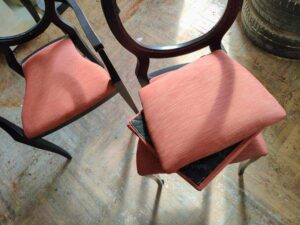What To Do About Toxic Paint, Carpet, Furniture (Offgassing For Years!)

This is an excerpt from an interview I did with building materials expert Andy Pace about toxic paint, furniture, carpet, and more. This was part of the Toxic Home Transformation Summit I helped put on.
In this article:
- Interview Beginning with Andy Pace
- Chemicals in the Home
- Furniture: the Good and the Toxic
- Off-Gassing: What is is?
- A Healthy Coat of Paint (or two)
- Help Your Chemical Sensitivities
- Upholstery
- Location, Location, Location
- Connect with Andy Pace
- Legal Action Against Toxic Materials
- Final Thoughts
Ryan and Teddy Sternagel are as passionate as I am about teaching you how to decrease your cancer risk. When their son, Ryder, was diagnosed at 11 months old with a deadly neuroblastoma, they got serious about cleaning up their home, diet, and lifestyle.
I had to do the same when my own first son developed life-threatening asthma and allergies.
Today’s blog post is an excerpt from an interview I did with Andy Pace. He’s a building materials expert who helps people facing serious illness to address and remove the sources of toxicity in their homes.
He’s been incredibly helpful to the Sternagels as they’ve built a new low-toxicity home in Park City, and today he’ll pass some of his tips along to you. If you implement just five strategies from these summit talks, it could make a significant impact on your disease risk and overall health.
Now, let’s learn some of the best advice Andy Pace had to share:
Interview Beginning with Andy Pace
Robyn: Hey everyone, and welcome to the Toxic Home Makeover Summit. Today I am interviewing Andy Pace.
Ryan Sternagel, my co-host in the Toxic Home Makeover Summit, introduced me to Andy, who is a building materials expert. For 25 years, he has worked as a consultant for people with depressed immune systems, asthma, allergies, and chemical sensitivities.
Andy is on the board of directors of several green building organizations and helps a lot of people figure out why their houses are making them sick. Then he helps them make the changes to fix it. Welcome, Andy!
Andy: Thank you very much. I'm really happy to be here today.
Robyn: I’m excited to interview you. I'm moving into a condo, and I’m very interested in what you have to say on a personal level.
We hear this term “green building” all the time these days. What does that actually mean, and what does that have to do with our health?
Andy: The term “green building” came about in the mid-1990s, and it had to do with encompassing the idea of energy efficiency, global environmental concerns, and the health of the building’s occupants.
Unfortunately, as the building industry began to adopt “green” practices, the human health issue got pushed to the back burner. Builders, architects, and the industry as a whole focused more on energy efficiency than human health.
Energy efficiency and saving our natural resources is a fantastic goal. However, the green building certifications that are being used across the country ignore the human-health component.
While many builders, architects, designers, and consultants talk about “green” from a human health standpoint, the metrics that they use really have nothing to do with human health; they have to do with outdoor air pollution.
My company, Green Design Center, is really the only organization in the country that focuses on the human occupant and the effects of the toxicity and hazards that are found in traditional building materials.
Chemicals in the Home
Right now, there are over 88,000 chemicals used in the production of building products and home goods. Out of those 88,000 chemicals, we only know the toxicological effects of 3%.
We have no idea what the other 80,000 chemicals do to the human body. My company tries to take the approach that we’ll just reduce the overall chemical load.

Formaldehyde
We know that with chemical sensitivity, asthma is triggered by formaldehyde. If we can eliminate formaldehyde from the building materials and from the home that’s been built, we can eliminate a vast majority of the problems. We also know that by eliminating formaldehyde, we're taking care of a whole host of other chemicals that are petrochemical-related.
It's been a long 25 years getting to this point. We have a group of about 100 manufacturers that we can trust and about 7,000 products that we use to help maintain or build a completely healthy home.
Robyn: Let’s talk about getting rid of formaldehyde. I imagine formaldehyde is in a lot of different home and building products. You said when you get rid of the formaldehyde, a lot of other chemicals disappear with it, because they're all in the same product.
What kinds of products have formaldehyde? Are we talking paint and carpet? Are we talking particle board in furniture, too?
Andy: Yes, all of the above. Formaldehyde as an ingredient was taken out of the paints in the late 70s, but manufacturers have added in what are called formaldehyde precursors or formaldehyde donors.
These are chemicals that each makes up less than 1% of the paint volume, so it doesn't have to be listed on the material safety data sheet. However, as the paint cures, it actually combines to create formaldehyde.
This is an example one of the biggest problems we have in this industry, which we call “green washing.” Manufacturers write about their products in a way that makes them sound very safe and healthy, but when you actually look at the words, the words have no meaning. The words don't add up to safety for the consumer and are just marketing.
Unbelievably, this is completely legal!
VOC: Volatile Organic Compound (as in, acetone, ammonia, butyl acetate)
Robyn: What are VOCs?
Andy: A VOC is a Volatile Organic Compound. VOCs are regulated by the EPA because of the propensity for them to react with low level of nitrogen and UV to create smog.
Back in the mid to late 90’s, the EPA started regulating VOCs and products. When you go to a hardware store or a paint store, a lot of the products you find are “zero VOC,” and the manufacturers give the illusion that these products are safe.
In reality, “zero VOC” just means that the products don't contain chemicals that contribute to outdoor pollution, but they can contain chemicals that aren't regulated as VOCs but are highly toxic to humans.
Those chemicals include acetone, ammonia, and butyl acetate commonly found in zero-VOC paints.
Robyn: This reminds me of a similar issue in the nutrition industry. For-profit companies talk about their foods in ways that make you think that they're healthy. However, the marketing terms are completely meaningless, unregulated, and in many cases, not even true.
I’m sorry to hear that it's very similar in the case of building materials, though I’m not surprised.
Furniture: The Good and The Toxic

Can you talk about furniture? I'm going to buy new furniture, so what kind of furniture should I buy? I have been told that I need to go to local craftsmen and tell them to use lumber instead of particle board.
Is that accurate, and if so, why? And what do we need to know about upholstery on furniture?
Andy: Yes, that's partially accurate. When you buy solid wood furniture, you eliminate all of the formaldehyde found in particle board.
Particle board and plywood is usually held together using adhesives that contain urea formaldehyde. Newer “urea formaldehyde free” materials replace the urea formaldehyde with phenol formaldehyde, which is safer, but it can still cause reactions for anyone with extreme sensitivities.
Solid wood furniture doesn’t have those types of formaldehyde, but there are two big concerns.
Firstly, wood furniture uses wood glue. I have personally tested water-based, so-called “non-toxic wood glue” and have found anywhere from 100 to 200 times the legal limit of formaldehyde.
Secondly, you have to worry about the finishes. Most finishes that are used by commercial furniture makers will continue to release toxins for about 3 1/2 to 4 1/2 years after it reaches a full cure.
So, if you use safe glue and finishes, solid wood furniture is going to be your best bet.
Robyn: I have to buy furniture from people who are educated about this. Your Green Design Center connects us to the people you trust, who actually know all this information and are using those safe finishes. Is that right?
Andy: That is correct. We have put together a service that connects buyers and sellers, whether it's for furniture, painting, contractors, flooring, installers, architects, or designers. We really have become a clearinghouse to vet a lot of these companies for our customers.
Over the last 25 years I've been hired by thousands of customers worldwide to help design or build healthier homes. We have a pretty extensive list of companies that use healthier materials.
Unfortunately, for every one company out there that uses healthy materials, there are a thousand who don't want to because they're just afraid of the unknown. They haven't used green products before, and they're worried they're not going to work as well.
However, once we get a chance to work with them and help them switch to a healthier product, they usually like to stick with it.
Robyn: Thank you for doing that work! It’s difficult to educate people about this. Furniture makers and carpenters and painters have been doing things this way forever.
It’s like trying to explain to people what they've been eating their whole lives is actually really toxic. Even though one meal full of heavy metals and pesticide doesn’t kill you, it doesn’t mean the food we’re eating doesn't create cancer risk.
Andy: That's also true with these materials. I have a client with extreme chemical sensitivity, but her daughter doesn’t share those sensitivities and is moving into a new home. She’s not being as careful as her mother did with the materials used in the remodel. Unless Multiple Chemical Sensitivity affects you directly, most people opt for whatever’s most convenient.
It's getting better, and there are more products available. What’s exciting about the advances now is that you don’t have to give up durability, availability, or affordability to buy healthier building materials. That wasn't the case 25 years ago.
Robyn: You just have to go to the right suppliers who know what they're doing.
Andy: Yes. You have to find somebody to trust.
Robyn: As a free gift to the people who purchased this summit, will you create a list from the Green Design Center of some of the best suppliers?
Andy: I will put together a list of my personal favorites, and you can send an email to those who purchased the summit.
Robyn: Great.
Off-Gassing: What Is It?

I’m going to move soon into a condo that was built a year and a half ago. Has a lot of the off-gassing from the carpet, paint, and other materials already happened?
Andy: Yes and no. Building materials will off-gas for their lifespan. However, a lot of the initial, big aromas come off of the surface within the first 90 days to 120 days. Those aromas are what the product absorbed during the manufacturing process and shipping process.
However, I've tested carpeting that's 25 years old that still off-gases at a rate of over 400 parts per billion of formaldehyde. There was a study done years ago by a scientist named Dr. Rosalind Anderson who tested carpeting that was over 20 years old, and it was still off-gassing enough to kill laboratory rats.
Other building materials can off-gas anywhere from a few months to a few years–and even longer for materials like plywood and particleboard. If you remove 30-year-old carpet and expose the plywood to the ambient air, the first thing you'll smell is formaldehyde coming off the floor. It doesn't go away on its own.
Robyn: Does it help to have it covered with carpet?
Andy: It does, but when you remove and replace the carpet, the formaldehyde in the plywood becomes airborne and the carpet itself can contain between 600 and 1200 chemicals that will off-gas for 20 years or more.
When I help remediate a home, the very first thing I advise is to rip out the carpet. I'd rather have you live on sub floors than on toxic carpet. There are safer versions of carpet, of course, and we can guide you to those.
Robyn: It makes you worry about the carpet-layers and people in the construction industry who endure this high chemical exposure on a regular basis.
Andy: Chemical exposure is an issue for painting contractors, as well. I speak for the Paint and Decorating Contractors Association, and there is a huge problem within the paint industry regarding painters and substance abuse. Many of the chemicals that are in paints and coatings are actually classified as narcotics.
Painters get addicted to these chemicals, and when they're not on the job site painting, they've got to get their fix through other means.
Robyn: That’s very sad. These painters are basically huffing paint all the time.
A Healthy Coat of Paint (or Two)

As we’re learning how to reduce toxicity, what do we need to know about repainting?
Andy: First of all, you need to identify the type of paint on the surface right now. If it is a water-based paint, we just need to wash the walls to get rid of any surface dust and then apply a couple of coats of new paint.
If the existing paint is oil-based or solvent-based, then we have to apply a special primer to the surface, and we can apply two coats of paint.
Generally speaking, we work with a brand called AFM SafeCoat, which is the only doctor-recommended paint in the world. It goes on like any other paint, and there’s no visual difference.
The AFM Safecoat paint brand never uses suspect chemicals because they focus on making products that are safe for the most chemically sensitive of consumers.
As long as you start with a clean surface, it's going to look as beautiful as any high quality paint on the market, but it will not off-gas whatsoever.
Robyn: I’d also like to talk about EMFs. We're talking more about chemical toxins in this interview, but I'm looking to reduce EMF exposure in my condo. I've measured the radon, and I need radon mitigation.
I’ve been reading about EMF-blocking paint, which you can use to paint the walls of your bedroom so that you're not getting the effects of cell phone tower and wi-fi. Do you know if EMF-blocking paint also helps with chemical off-gassing?
Andy: Most people who are chemically sensitive are also sensitive to electromagnetic fields and often have other sensitivities as well. Sometimes we have to decide which sensitivity is most important. If chemical off-gassing is most important, we use a program we call “degree of green.”
“Degree of green” is a system that I created about a decade ago. We ask the customer a series of 27 questions to find out what their personal degree of “green” is and identify what we're trying to avoid most. That helps us figure out what our objective is.
If electromagnetic fields need to be avoided as much as chemical exposure, we do a coating of Y-Shield EMF blocking paint. Then, we paint over it with AFM SafeCoat to block the off-gassing. Unfortunately, there's no perfect single product.
Robyn: I need two different paints.
Andy: There’s also a third paint for extreme sensitivity to mold. Caliwel kills mold on contact, keeps it from coming back for up to five years, and doesn’t use any toxic antimicrobials. It’s also EPA registered, is extremely effective, and is completely toxin free.
However, if someone is extremely chemically sensitive and can’t tolerate the ingredients in Caliwel, we top-coat it with AFM SafeCoat paint. Like I said, there is no perfect product. We find out what's most important and take it from there.
Robyn: So potentially, you could do an EMF-blocking paint along with the mold protective paint and put the AFM SafeCoat paint on top to help with the off-gassing.
Which parts of your home would you recommend spending the money on or the effort to repaint? Should you focus mostly on your bedroom, where you're sleeping at night, or the places you spend the most time?
Andy: I think that the bedroom is the sanctuary and should be the safest room in the house. The best thing you can do is to create a safe bedroom where you spend six to eight hours a night getting restful sleep knowing the room itself is not poisoning you. That means making sure you're using the right paints and coatings and making sure the flooring is free of chemical off-gassing.
Help Your Chemical Sensitivities

I also recommend a good quality air purification system in the bedroom if you don't already have one for the entire home.
Also, consider hiring an electrician to install a kill switch for the bedroom to make sure you can turn off all power with a flip of a switch when you enter the room.
Robyn: You mentioned that when people have chemical sensitivity, they also tend to be EMF sensitive.
I’ve asked many functional medicine practitioners why some people are really triggered by chemical sensitivities and others of us don’t noticeably react to the chemicals in our environment.
Dr. Ben Lynch, who will be featured as part of this toxic home transformation summit, has mentioned there are actual genetic SNPs and genetic mutations that may lead you to be chemically sensitive.
I think the MTHFR gene plays a role, but most of the practitioners that I have talked to say that we become chemically sensitive become our immune system is overtaxed. We’re constantly battling chemicals and EMFs and it’s all too much.
You've dealt with lots of experts on this. What do you think about that theory?
Andy: It's actually a very valid theory. Multiple Chemical Sensitivity is now a documented disease.
It is not something people make up in their head, but we don’t know very much about it. It was only added to the American Medical Association's manual a couple of years ago, so we are just now starting to see research.
I think of it like this: Everybody's born with a 55-gallon drum in their body that absorbs chemicals throughout the day. At the bottom of that drum is a spigot, with the filter, so your body can absorb the chemicals and then filter them out. With chemical sensitivity, that drum gets filled up really fast, and once it starts to overflow, you can't stop it.
At that point, any chemical you come in contact with will cause the exact same reaction.
Even trickier is that some people will tell you that they react to smells, but they're actually reacting to the chemical, whether it has a smell or not. If you have chemical sensitivity, you can actually react to the fear of a smell of a chemical in the same way you’d react to the chemical itself.
So when we get involved in new home construction, we have the client test every single product that's going into that home, all the way down to the screws and nails that hold the house together.
We provide every product in a glass jar, and clients do the sniff test or go to a physician or healthcare practitioner like an allergist. They'll do muscle testing to identify any problems.
Once the products have been approved, we mark them on an Excel spreadsheet. Then we know that when the clients walks into the home, we’ve tested everything and know it's not going to cause a reaction. It’s extreme, but it does work.
Robyn: So we have to be compassionate to that growing number of people who are chemically sensitive and recognize that it’s real. Even if you don’t receive a medical diagnosis, these chemical toxins still cause cancer and other diseases.
In my case, I’m especially sensitive to perfumes.
Andy: Perfumes are particularly horrible, because commercially available perfumes are a combination of synthetic and natural chemicals.
We actually have sealers that we use inside bathroom vanities to seal off odors that have been absorbed into the wood, but if it's a perfume, it's almost impossible to seal because that's both synthetic and natural.
Robyn: It gets through.
I read a study that said many of the ingredients in perfumes are chemicals that have not been approved. On average, a perfume includes 14 chemicals that have not been tested or approved by the FDA.
[Related post: Toxic Cosmetic Ingredients To Avoid]
You said that out of 88,000 chemicals that are in our furnishings and paint, only 3% of them are actually tested. Plus we don't know what the aggregate is, right? Sometime chemicals combine and react in unexpected ways.
Keeping that in mind, what should we be aware of when redoing our floors?
Andy: We always advocate the use of hard surfaces that are easy to clean and easy to maintain. So, a common theme you'll hear from me is to avoid carpet, because in many cases, it’s a toxic material that absorbs and releases other VOCs, and it also becomes a sponge in the home.
The exceptions are two brands of carpet that are completely chemical-free and are made for those who have chemical sensitivities and want something soft underfoot.
Beyond that, hardwood floors, ceramic or porcelain tile, natural linoleum, and natural cork are the best options.

These days, there are even some vinyls that I recommend. In the past, I've never advocated for the use of vinyl floors because it contains plasticizers and phthalates that can off-gas formaldehyde, but we've found some specific vinyl materials out there that are far better.
In fact, we’re using a vinyl planking material called Cali PRO that includes limestone as the main ingredient for one client now. It combines natural mineral with virgin plastics and some other things to make a product that's highly durable and does not off-gas. We've tested it personally and found zero formaldehyde off-gassing.
It's a smooth surface, so it's easy to maintain without using toxic chemicals. Plus, it carries a 50 year warranty. It's going to last.
People often assume that if you buy green building materials, they’ll be expensive or you won’t have many choices or they’ll be ugly. That's absolutely not the case.
These floors are beautiful, functional, durable, and very affordable. On top of that, they're completely free of formaldehyde off-gassing. So we're really excited about what's on the market right now.
Robyn: You said there’s even carpet available now. I can get high performance carpet that’s durable and looks great, and it's been available for long enough that they know that it's not going to off-gas petrochemical fumes, correct?
Andy: Yes, that’s correct.
That carpet is made with good old fashioned wool, along with natural fibers, a hemp backing, and jute and cotton that’s all organically sourced. There are no pesticides, flame retardants, or chemical dyes.
If you're chemically sensitive, you can tolerate this carpet, though if you’re sensitive to the lanolin in wool, you’ll still have to be mindful of that. We allow people to test it to determine their own personal tolerance.
As I said earlier, there is no perfect product. There's nothing available in the world that is completely safe for everybody. So we always make sure to test for personal tolerance.
Robyn: That's really going to the mat for your client, and that's great.
Upholstery

We started talking about furniture and how particle board and plywood are the problem. If you go with regular lumber, you're going to be safe.
Can we talk about upholstery? Is it mostly the stain guard that's the problem?
Andy: With upholstery, there are three main problems: flame retardants, stain blockers or stain resistors, and anti-microbials.
There’s a substance called Microban that has found its way into a lot of consumer goods these days. It’s actually triclosan, which is a low level of pesticide that offgasses for the lifespan of the surface.
When you're buying upholstery or having furniture upholstered, make sure you’re choosing organic fabrics. For those with chemical sensitivity, sometimes natural leather is easier to tolerate than organic fabrics. Because it's more of a solid surface, it's less likely to absorb chemicals from other sources.
Robyn: So choose organic fabrics or natural leather, and make sure that you specify that you don't want any stain resistant treatment, no Microban, and no flame retardant.
Location, Location, Location

Let’s talk about what to test in advance when you’re choosing a location to live. When you’re building a home and trying to chose the site, what should you look for?
WiFi (and soil)
Andy: First of all, look at the WiFi situation in the area. There are some electromagnetic fields you can't control on the site, but you can control them in your home.
Make sure you’re not in a place that uses the 5G network. If you’re in a condo development, make sure that the power company isn’t using smart meters.
I also recommend finding out what the land under the house was used for before you build on it. If it was a farm 30 or even 50 years ago, the chemicals used in traditional farming could still be in the ground.
All soil absorbs and filters differently, and the chemicals may have made their way down to the water table. You’ll want to test for all of that.
When it comes to the lot itself, look at how the house will sit on the land and if you’ll be able to take advantage of passive solar energy or traditional wind currents.
You’ll have to decide for yourself which of these is important to you and then have any necessary tests or assessments done.
Robyn: What can people do about EMFs? We already know we should keep our wi-fi routers off as much as possible. The cellular data for our phones also has EMF dangers.
For people who are building or working with an electrician for updates, what are some things people can do in their homes to decrease WiFI or EMF?
Andy: You can actually have an electrician wire the home in a method that eliminates electromagnetic fields from the wiring itself. The electrician will use twisted wires so that the electromagnetic field stays within itself.
Because you're not crossing any electrical lines with water lines, the water won’t carry that electromagnetic field throughout the entire house.
As I mentioned before, I also recommend putting kill switches in the bedrooms to make sure you’re creating sanctuaries when it comes to internet access, television, and so forth.
I like to make everything hard wired. You can put networking cable throughout the entire house, and you can even get routers to plug in your cell phones using hardwiring.
By eliminating internal wi-fi and the internal electromagnetic fields, it makes it a lot easier to combat the other things that are coming into the house by using different types of shielding during the construction process.
If you're forced to use a smart meter from the electrical company, there are smart meter covers that completely shield you from that radiation.
Robyn: That’s so important, especially when there are multiple smart meters. Sometimes there are two or three smart meters, and they triangulate and cause people severe distress.
Water Quality

Let's talk a little bit about water quality. What's your opinion about best water quality?
Andy: First, it depends upon whether your water comes from the city or a well, because there are different systems based upon that.
Depending upon where you get your water, we look at typical problems in the area. There are websites you can visit to find out what the groundwater is like in a certain area if you want to move or build there.
Once we know what type of system to install, we advocate for a whole house filtration system and then a point-of-use specific system.
That could be a point-of-use filter for chloramines or an ionizing filter. There are a lot of specialty filters on the market, but water is probably one of the easiest to deal with because there's just one pipe coming in.
We know we can put that one pipe through a specific filtration system to take care of what's in that water. What comes out is going to be drinkable, and you don't have to worry about the chemicals that are absorbent to the skin.
Obviously fluorides and lead are a problem with city water. With city or well water, there can be an enormous problem with radium.
There are more issues when it comes to well water on old farmlands because of chemical fertilizers and pesticides. In most cases, we’ll use a series of three or four different filters to get pure drinking water.
Robyn: People think well water is better because it doesn't have the chlorine and fluoride in it, but now we have to deal with the glyphosate in our groundwater. So, well water still may need attention.
Connect with Andy Pace
If someone who is chemically sensitive wants to hire you to help mitigate these issues and reduce the risk in their home, how would they go about that? Do you work with clients long distance?
Andy: When I started the company 25 years ago, all I wanted to do was to get healthier products into the hands of people who needed them. I really didn't care where a person was located, and I still don't. I just want them to have access to healthier products.
Now, I get calls from people worldwide asking for help with remodeling, maintaining, or building a home. In that case, I consult with clients in 15-minute increments to make it easy.
We have some clients that hire us for a full year because they're doing a construction project and want 24/7 access via telephone and email. If you just want to get three or four questions answered, I can usually complete that in a 15-minute telephone consult.
It's very easy. Instead of spending hours and days on the internet investigating for yourself, call us. We will completely change what you've learned digging through information and marketing claims on the web.
I spend hours every day re-educating people because the research they found was actually incorrect information. They could have saved time by spending 15 or 30 minutes with me on the phone.
Robyn: I’m working with a decorator who’s really interested in holistic options. I imagine there's a business opportunity to plug decorators into these resources that you have. Do you work with interior designers?
Andy: We do. I do a lot of guest lecturing at interior design schools around the Midwest, and we’ve created the Green Design Center Trade Partner program.
If you are an interior designer, a contractor, or another retailer, you can sign up with Green Design Center as a trade partner.
Then you get access to all 7,000 products that we have at wholesale prices. We also educate anyone who registers about the materials we use.
All the leads that are generated through our own social media and website go directly to the local trade partner.
My background is in architecture and design, so I speak that language. I can help go through the process with anyone who is interested.
Robyn: I bet there are many interior decorators who would love to help people in a more mission-oriented way, rather than just creating beautiful homes. They could help people to have beautiful HEALTHY homes, which is your whole mission.
Legal Action Against Toxic Materials

It’s important to note that this idea of toxic materials isn’t just speculation. A few years ago, a large flooring company called Lumber Liquidators got in trouble because people were getting sick from their floors, even though they were supposed to be safe.
There's also another big manufacturer that's facing millions of dollars in potential fines and replacement costs because their products are releasing toxic levels of formaldehyde.
There's major litigation and class action lawsuits from consumers who are getting sick. Can you tell us about that?
Andy: The Lumber Liquidators problem happened a few years ago because most of their floor materials are made in China. Because of poor translation, a lot of the documentation does not come across properly.
The flooring was being marketed as being CARB–or California Air Resource Board–compliant. They have a certification that says that materials like flooring don't release more than a certain amount of formaldehyde.
This product was coming into North America and was stamped CARB compliant, but people were complaining that the flooring was making them sick. A 60 Minutes report showed that these floors were releasing anywhere from 10 times to 1,000 times more formaldehyde than CARB allows.
Lumber Liquidators went into a tailspin and had to rip out hundreds of thousands of square feet of flooring because it was mislabeled.
Nobody can prove if they did it intentionally or if it happened because of poor translations, but the problem existed and people were getting sick. It comes down to this: You have to be able to trust your source!
The other problem you mentioned is happening with a completely different manufacturer that makes engineered truss joists, which are floor joists for new construction that sit underneath the sub floor and hold up the whole floor.
Because these joists are full of modern chemicals, they’re more prone to combustion than old fashioned materials, so these were sprayed with a fireproof coating. That fireproof coating released toxic levels of formaldehyde, causing people to leave their homes because of how sick they were getting.
This problem is new and it just started happening in the last six months. There are thousands of homes affected in the US, and there’s already a class action suit that’s been filed.
Because the building industry focuses on “green” from an energy efficiency standpoint and not a human health standpoint, these things will continue to happen. Manufacturers are not required to use non-toxic materials.

Manufacturers are told by the EPA to use outdoor air-friendly ingredients. The unintended consequences in doing so is that human toxins are being used instead, and there are no regulations regarding that.
Remember the canaries in the mine shaft? Chemically sensitive people are the modern day canaries telling us there's a problem.
Now, even people who don't have chemical sensitivities are being affected. Their homes are poisoning them because there are no regulations surrounding toxic ingredients.
Formaldehyde is a key trigger for sensitivity and is a cancer causing agent, and yet it's found in half of the building materials available today. These big problems will continue to happen until we do something about it.
Robyn: This can be very discouraging, but it’s exciting is that you’re creating awareness and are calling attention to the canaries in the coal mine. It’s also wonderful that you’re familiar with all the companies and products that are suitable for people with chemical sensitivities.
As you said, whether we feel sensitive or not, it affects us and is increasing our cancer risk.
Final Thoughts
Before we go, tell me why you do this. How and why has this become your mission?
Andy: I started this company 25 years ago because my customers were getting sick from a water-based coating I sold. People were complaining about the odors. We rushed three of our own workers to the hospital because of inhalation complications.
I thought, “There's absolutely a better way to do things,” and so we found a better way to do things. It took us years to put together this list of trusted manufacturers.
I still get Christmas cards and thank you notes from customers of mine from 20 years ago that are happy to be alive. We have families who have autistic children who can actually live in a newly decorated home and it doesn't exacerbate their symptoms.
Yes, this is a business for us and we treat it as such, but the fact is that we can sleep at night, literally and figuratively, because I don't have to worry that I'm poisoning my customers.
I don't have to worry that we're trying to pull the wool over somebody's eyes to sell a product. We know we're doing good things, and we know that folks who are severely affected by their environments can build, remodel, or maintain healthy homes without spending more than what they would normally spend.
Robyn: Thank you for the work that you're doing in the world–and for being here with us.
Read Next: Why You’re Hearing That Smart Meters Are Dangerous

Disclosure: This post may contain affiliate links that help support the GSG mission without costing you extra. I recommend only companies and products that I use myself.

Posted in: Detox, Eco Friendly Living, EMF, Lifestyle, Natural Products

















